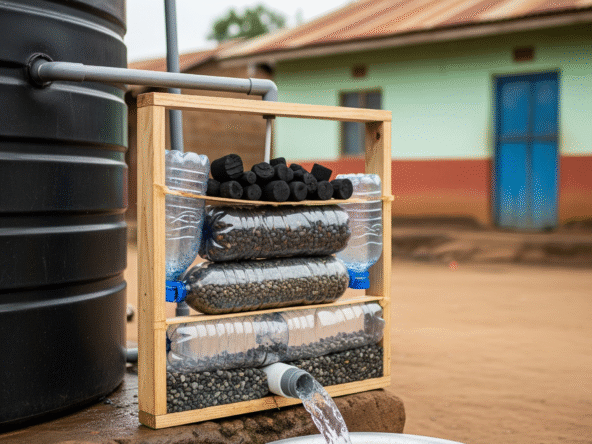In Kenyan homes and farms, managing water efficiently is critical especially when using rooftop tanks, underground reservoirs, or multi-tank storage systems. One often overlooked yet costly issue is tank overflow, which wastes water, damages infrastructure, and shortens the life of plumbing systems.
Installing a tank overflow alarm system provides a simple, low-cost solution to prevent this problem. This guide explains how these alarms work, where to install them, and how to integrate them with your broader water system.
1. What Causes Tank Overflows?
Tank overflows typically happen due to:
- Forgetting to switch off pumps
- Stuck or misaligned float switches
- Faulty pump timers or automation lags
- Rainwater collection into already-full tanks
Overflow risk increases in gravity-fed systems, especially when water is supplied continuously without active monitoring. Learn more in Gravity-Fed Tank Setups in Kenya.
2. How Do Overflow Alarm Systems Work?
An overflow alarm uses a sensor placed at the tank’s top level. When the water touches the sensor:
- A buzzer or alarm is activated
- Some models trigger a light indicator
- Advanced systems can even send SMS alerts or cut power to the pump
You can also combine overflow alarms with float switch automation, as detailed in Tank Refill Automation Using Float Switches.
3. Types of Tank Overflow Alarms
| Type | Features | Suitable For |
|---|---|---|
| Basic Float Alarms | Mechanical float triggers buzzer | Small to mid-size domestic tanks |
| Electronic Level Alarms | Probe sensors activate alert at full level | Poly or underground tanks |
| GSM Smart Alarms | Sends SMS alerts to phone | Off-grid homes or remote farms |
| Auto-Cutoff Alarms | Alerts and automatically shuts off the pump | Automated systems and IBC tank setups |
For interconnected systems, alarms work well with Multi-Tank Linking Systems in Kenya, especially where one tank’s overflow could affect others.
4. Where to Install the Alarm
Install overflow alarms in:
- Plastic rooftop tanks without overflow pipes
- Underground tanks where water is hard to see
- IBC tank systems used in peri-urban and rental compounds
- Near pump control panels or within Tank Shelters and Lockable Enclosures
5. Benefits of Tank Overflow Alarms
- Prevents water waste and high utility bills
- Avoids structural damage from water overflow
- Reduces pump wear caused by excessive cycling
- Improves automation and water control
- Adds safety for systems relying on Backup Pumping Options During Cloudy Days
6. Typical Costs in Kenya (2025)
| Alarm Type | Price Range (KSh) |
|---|---|
| Basic Buzzer Alarm | 800 – 1,500 |
| Electronic Level Sensor | 2,000 – 3,500 |
| GSM Alert System | 4,000 – 8,000 |
Prices depend on tank size, sensor type, and compatibility with power sources like Solar-Powered Water Pumps for Rural Tanks.
7. Installation Tips
- Mount the sensor 5–10 cm below the tank lid
- Use waterproof connectors to prevent short-circuits
- Test your system weekly, especially during rainy seasons
- Ensure the buzzer or light is easily visible or audible from common areas
Installing a tank overflow alarm system helps prevent unnecessary water loss, equipment failure, and property damage. Whether you manage a rooftop tank in Nairobi or a buried cistern on a rural farm, this affordable tool enhances the reliability of your water system.
Explore More:


